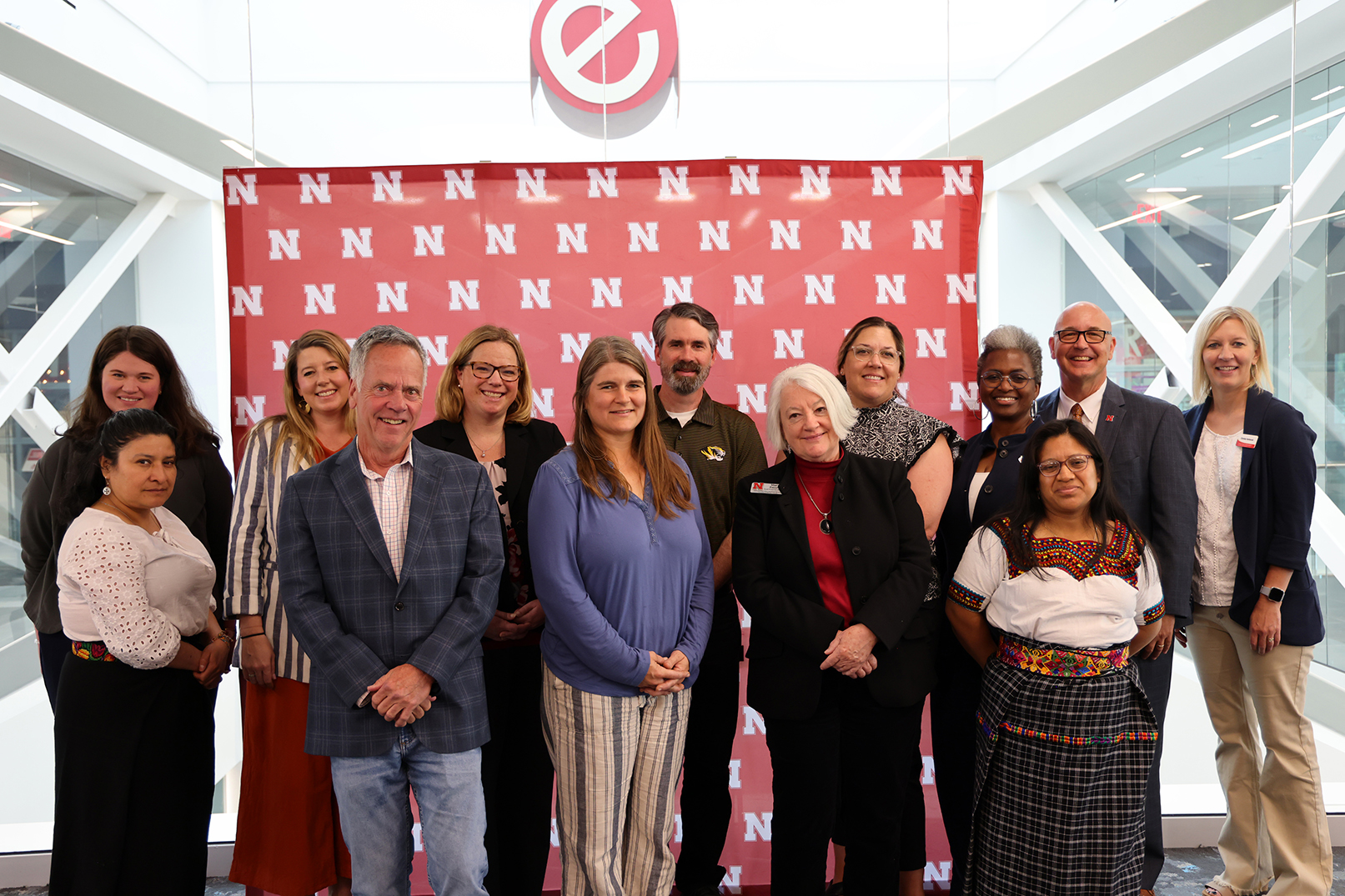
Jennifer Lester Moffitt, under secretary of agriculture for marketing and regulatory programs at the U.S. Department of Agriculture, visited the University of Nebraska–Lincoln’s East Campus on May 23 to participate in a roundtable discussion on the $25 million grant awarded to Rural Prosperity Nebraska to create the Heartland Regional Food Business Center.
Led by Mary Emery, Rural Prosperity Nebraska will work with 33 partners to create a resource hub for regional food systems that serves residents of Nebraska, Iowa, Kansas, Missouri and Oklahoma. The center is one of 12 that the USDA is establishing across the country with funds from the American Rescue Plan Act.
“Yes, we need this incredibly efficient food system that is feeding our nation,” Moffitt said. “We also need a really strong local and regional food system — one that is bringing and adding more economic value to farmers and ranchers in our community; making sure that we’re providing great, nutritious food to our communities; strengthening our local and regional markets; and strengthening our rural communities by bringing jobs into the communities.”
Of the 33 partners contributing to the Heartland Regional Food Business Center, nine attended the roundtable discussion in person and five via Zoom, representing universities, extension programs and regional nonprofits. The discussion highlighted the importance of collaboration, focusing on the need to draw from the expertise and connections of each partner for the center to be successful. In addition to farmers, farmers markets and food processing hubs, attendees also discussed food deserts in rural regions, food scarcity in urban settings, and nutrition education programs.
“Regional food systems are like puzzle pieces,” Emery said. “The Heartland Regional Food Business Center will help put those puzzle pieces together. In this process, we’ll see more clearly where the system is strong, where there’s room for improvement and where there are opportunities to collaborate and try to find new ways to increase access to fresh, healthy local and regional foods.”
The regional food business centers will not have physical locations but be online portals where anyone involved in regional foods can find information, resources and connections to further their involvement in, and contribution to, their region. Farmers can connect with local schools about meal programs, farmers markets can connect with community leaders, and rural residents can connect with locally owned grocery stores.
Mike Boehm, NU vice president of agriculture and natural resources and Harlan Vice Chancellor of the Institute of Agriculture and Natural Resources, emphasized that the center is not simply an expensive website. It will be the nucleus of a network that will, as people contribute to it, become more intricate, more robust and more impactful for individuals.
“When you think about the push that we make in production agriculture at land-grant universities, that’s important,” he said. “The science and the engineering and the business models are all critical. But really this all comes down to people. It’s about meeting people where they are, and it’s about doing better with the amazing resources that we have.”
In addition to connecting the various players within a regional food system, the center will provide planning assistance for small- and mid-size food and farm businesses, as well as financial assistance for those seeking to expand their operations to meet the food and nutrition needs within their regions.
“We’re very excited about these regional food business centers, and we’re really excited about the partners on the ground,” Moffitt said. “I believe very strongly in locally led solutions, that we do more when people who are trusted in the region, who know the region, who already have partnerships in the region, are empowered and have the funding to be able to come together to overcome complex challenges and find creative solutions.”
For more information on the 12 regional food business centers, visit the USDA’s Agriculture Marketing Service website.








